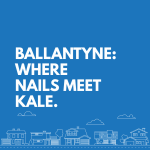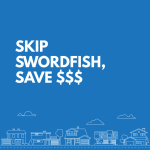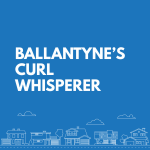Why Another Fish Story?
A Washington Post Well+Being column on the “healthiest seafood” triggered lively newsroom chatter here in Ballantyne [1]. If you missed it—or the paywall caught you—this is your CliffsNotes, with local context.
The Omega‑3 Equation
Fish supply EPA and DHA, fats that brains and arteries cannot build. Four ounces twice a week is the American Heart Association target for adults [2]. Pregnant and breastfeeding diners need two or three servings of low‑mercury fish for fetal brain growth [1].
Best Bets at the Counter
- Wild Salmon: High omega‑3s, low toxins, accessible in canned or frozen form [1].
- Sardines, Anchovies, Atlantic Mackerel: Small fish, small mercury load, large nutrition return [1].
- Rainbow Trout (Steelhead): Vitamin D and omega‑3s at a friendly price [1].
- Mussels & Oysters: Protein, B‑12 and minimal mercury—cook oysters to dodge bacteria [1].
Middle‑of‑the‑Road Picks
Shrimp, tilapia and catfish carry little mercury but sparse omega‑3s; dietitians note you would need more than fifteen weekly servings to match salmon’s fatty‑acid haul [1].
Tuna: Read the Label
Skipjack (sold as “light” tuna) usually outperforms albacore on mercury, yet test results swing. General rule: three light‑tuna servings or one albacore serving weekly for adults; none for expecting parents. Children under ten should stay under two light‑tuna servings [1].
Put These on Hold
King mackerel (the oversized cousin, not Atlantic), shark, marlin, orange roughy, swordfish, tilefish and bluefin or bigeye tuna ride the mercury express [1].
Plant‑Powered Work‑Arounds
Walnuts, flax, chia and soy deliver ALA, which the body partly converts to EPA and DHA. Grass‑fed dairy and eggs add modest extras [1]. Use them to bridge gaps, not replace fish outright.
Ballantyne Shopper’s Shortlist
Frozen wild salmon and tinned sardines line most Charlotte freezers; check those aisles before blaming busy schedules. Sushi fans: ask what “white tuna” really is. When uncertain, the Seafood Watch app can steer you toward safer picks [3].
About the Author
Nell Thomas files from Strolling Ballantyne powered by a large mocha at Einstein Bros. Bagels Ballantyne (13736 Conlan Cir, open 6 a.m.–2 p.m.; pro‑tip: honey‑almond shmear on cheddar‑bacon). She also writes for The Charlotte Mercury, proving caffeine still fuels journalism.
Dive Deeper on Strolling Ballantyne
Events | Hospitality | People | Pets | Politics | Real Estate | Sports | CMPD | Partners | Statewide | Charlotte | Ballantyne
Thanks to Our Partners
- Einstein Bros. Bagels – morning intel link
- Perspire Sauna Studio Ballantyne – sweat science profile and deep‑dive
Have a seafood snapshot or family recipe? ballantyne@strollmag.com. Everyone has a story worth sharing! 🐟
Fine Print & Fish Bones
About Us | Advertise | Privacy | Contact | Terms | Media Kit
Endnotes
- Anahad O’Connor, “What is the healthiest seafood? Here’s what dietitians say,” The Washington Post, June 11 2025, Link Here.
- American Heart Association, “Fish and Omega‑3 Fatty Acids,” heart.org.
- Monterey Bay Aquarium, “Seafood Watch Consumer Guide,” seafoodwatch.org.
Creative Commons License
© 2025 Strolling Ballantyne / The Charlotte Mercury
This article, “What Charlotte Should Eat From the Sea: Lessons From a Washington Post Report,” by Nell Thomas, is licensed under CC BY‑ND 4.0.
“What Charlotte Should Eat From the Sea: Lessons From a Washington Post Report”
by Nell Thomas, Strolling Ballantyne (CC BY‑ND 4.0)






